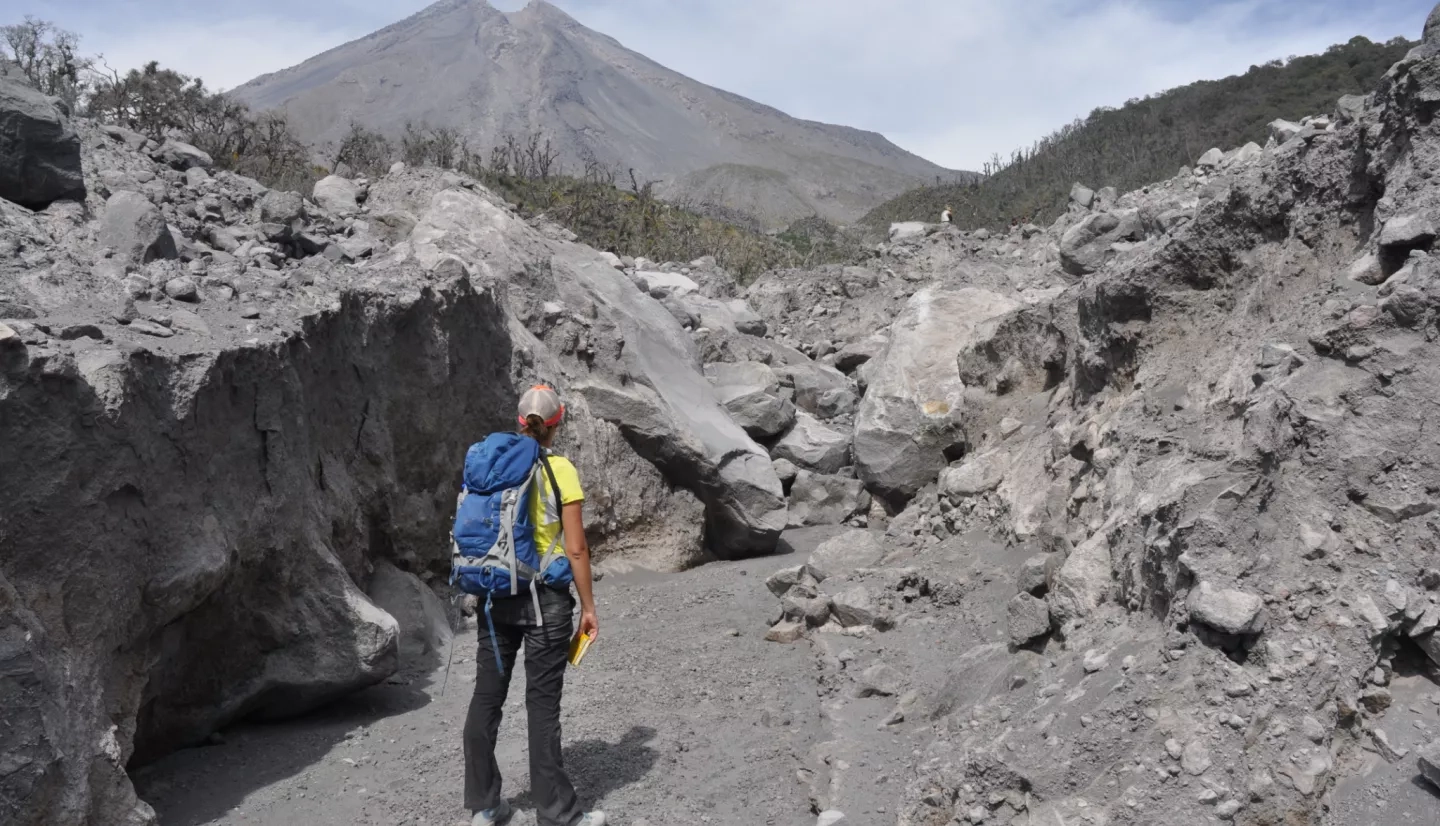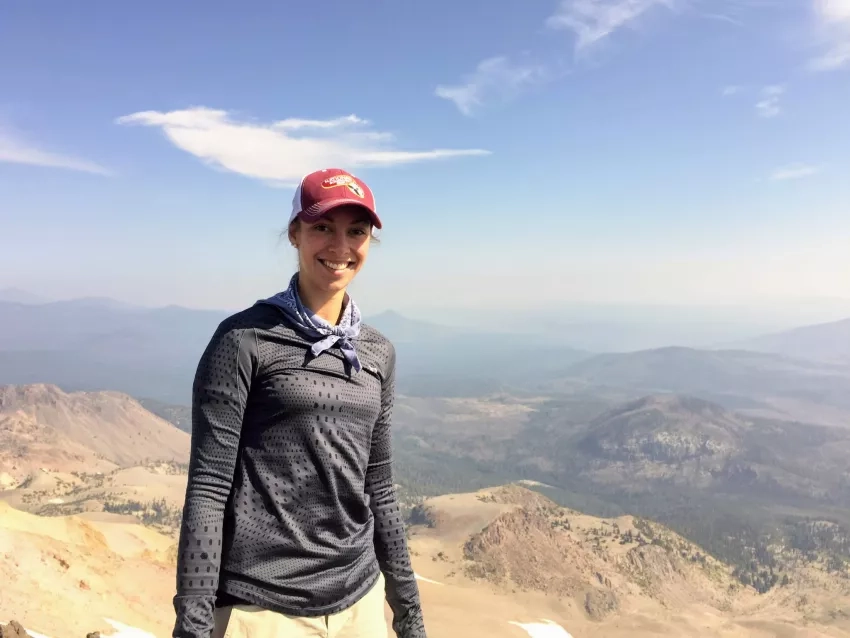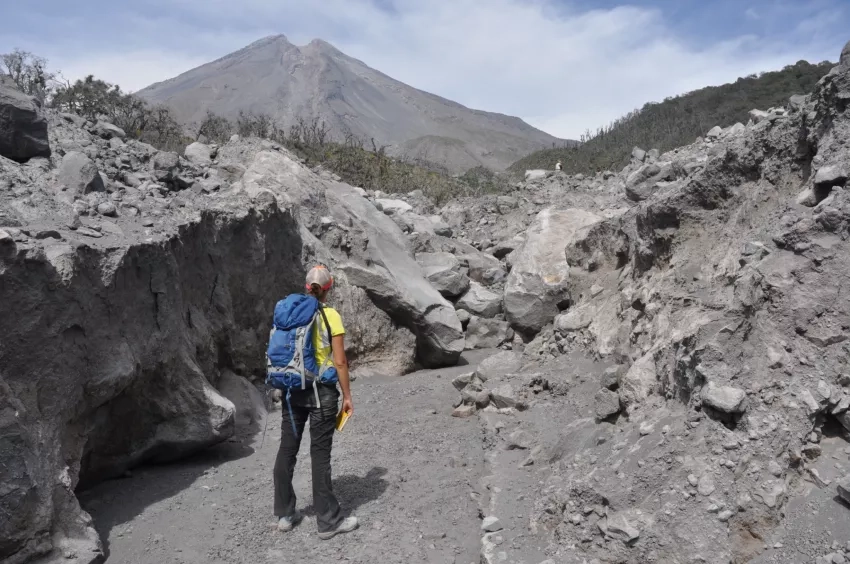Editor’s note: This article continues our series of profiles presented from the perspective of NASA interns and graduate students. The intent is to provide opportunities to discover and understand the unique value of NASA’s diverse workforce through new lenses. For this story, NASA Applied Sciences Disasters program science writer intern and William & Mary student, Gabriella Lewis talked with Elodie Macorps, a student research collaborator, working in the Disasters program area.
One of Elodie Macorps’ instructors doubted her scientific potential because she is a woman. Now, she works for NASA. Macorps has her sights set on using remote sensing to mitigate future natural hazards, and her career path to NASA included degree changes, sexism, and a search for purpose in her research. What drove her to persevere is her desire to help those in need, and she continues to be a valuable asset to NASA’s Disaster program every day.
Education
As an undergraduate student in her home country of France, Macorps pursued a degree in biology intending to become a science teacher. However, she quickly realized that she was more excited about her geology classes than her biology ones, so she switched her major to geology and geophysics. Then Macorps took a course in volcanology, which shifted the course of her education even further. “That’s when I realized that I just loved the studying aspect of the research world,” she said, “I loved everything about everything that he [the professor] was telling us.” She went on to apply for a dual master’s program in Volcanology and Geotechniques, where she would spend the first year of the program in the United States and the second year in France. “I applied thinking I would fail anyway, but then I got in. It’s funny how that works out sometimes.” When it came time to choose a Ph.D. program, she decided to return to the United States to continue her studies.
Imposter Syndrome in STEM
As a Ph.D. student, Macorps studied geology, focusing on volcanic hazard assessment and modeling volcanic flows. Unfortunately, she found the social atmosphere to be completely different from her previous experience in the United States. “I felt really depressed, and my love of science decreased a little bit. I think the environment had a lot to do with that.” Right away, a faculty member told her that she was only selected to fulfill a gender quota and that they preferred a male applicant over her. “They chose me not because I’m qualified, but because they needed a woman. That was kind of crushing.” The interaction left her feeling inadequate for the position, kicking off a long battle with imposter syndrome, which is when people doubt their own abilities and achievements. Not to be deterred, Macorps continued to seek new opportunities in volcanology, landing a two-year NASA Earth and Space Science Fellowship (NESSF) in 2017 during her time as a Ph.D. student. It was here that she changed the trajectory of her research from modeling volcanic flows to applying remote sensing for volcanic hazard assessment under a new advisor. For Macorps, achieving this fellowship with NASA was the first step toward realizing that she was not a mere quota, but rather a talented scientist in her own right.
While pursuing her Ph.D., she researched volcanic pyroclastic flows, which are massive clouds of hot ash, gases, and rock fragments that come hurtling down the side of a volcano like an avalanche during an explosive eruption, or from the collapse of a lava dome under its own weight. “They travel really fast on the ground, and they’re pretty much impossible to escape.” Pyroclastic flows are the most dangerous type of volcanic hazard, and are perhaps best known for burying the city of Pompeii in ash. Macorps’ research focused on helping people survive such catastrophic events. “What I really wanted to do was use satellites to help both predict where these flows might go, but also… to help emergency responders determine where exactly they should go to look for survivors.” She said that working with NASA gave her access to more resources to dedicate toward this goal, as well as a team of dedicated individuals willing to help her move forward.
NASA Applied Sciences Disasters Program
The NASA fellowship was only the start of her work with NASA. In 2019, Macorps joined the NASA Disasters program as a student researcher working to apply satellite data to volcanic eruptions to help lower risk for communities that live near active volcanoes. Throughout her time at NASA, she learned just how strong an impact her research can have on those in need. According to Macorps, as a scientist, when you are deep into your own research, it can feel as if nobody will ever see it. She explained that watching her research at NASA be used for the benefit of others was a “revelation” because she had wanted to have an impact for so long. “I wanted to [do] something that would actually be important to people and would matter.”
NASA’s workplace atmosphere also delighted her. “Everyone is so open-minded, accepting, and motivating. You’re always part of a team.” Macorps was pleased to discover that NASA focuses on collaboration among scientists rather than competition. In February of 2021, she successfully defended her Ph.D. thesis, earning the well-deserved title of “Dr. Macorps.” Macorps would like to remain at NASA and continue working on remote sensing data for emergency managers, but she says another path could be moving to the private sector to work on disasters. “I want to do something that will be impactful, and I feel like those are the two avenues that I could take.” Overall, her goal is to continue to use her scientific expertise to reduce disaster risk and make volcanic eruptions, as well as other types of natural hazards, safer.
Advice for Future Graduate Students
Macorps wrapped up our interview with three pieces of advice for future graduate students who are interested in NASA:
- Always apply for opportunities regardless of whether or not you think you will get them.
- Build relationships with the people in your field.
- Do not assume that everyone in the room is smarter than you – you did not get to where you are by accident.






